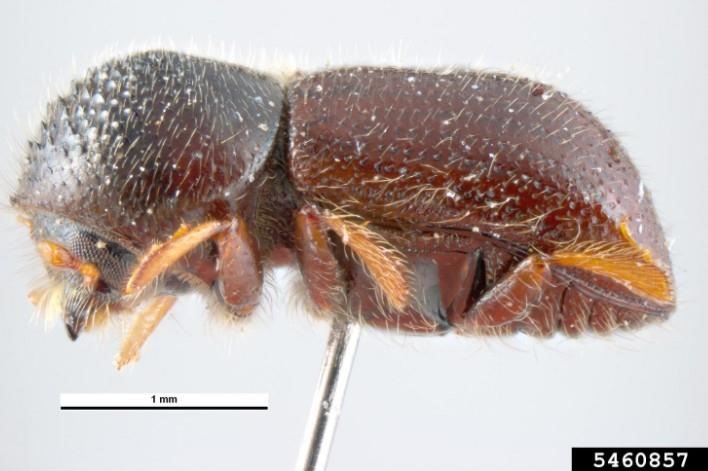Overwintering adults become active in late April or early May after one or two consecutive days of 68 degrees Fahrenheit or higher, often coinciding with blooming forsythia. The first few adults have been captured in southwest and west central Michigan at this time. Adult black stem borers are very small (0.08 inches long).
 Adult black stem borer. Photo by Pest and Diseases Image Library, Bugwood org.
Adult black stem borer. Photo by Pest and Diseases Image Library, Bugwood org.
Growers are encouraged to use a simple ethanol baited trap to monitor for activity, starting in mid-April. Traps are most effectively deployed near adjacent wooded areas at a height of 1.6 feet. Hand sanitizer is an easy and accessible bait but should be refreshed every few days.
 Simple homemade monitoring trap for black stem borer hung on deer fencing. Photo by a grower.
Simple homemade monitoring trap for black stem borer hung on deer fencing. Photo by a grower.
Growers with vulnerable trees and positive trap catches or a history of damage will need to apply a trunk spray to prevent damage. The time to spray an insecticide for this pest is when females are flying in the spring before colonizing new trees. Young trees near the perimeter of orchards, especially near woodlots, are at greatest risk of injury. Because they are so tiny, it is difficult to monitor for adults to determine the optimum time to apply an insecticide, but a trap as described above can help time applications.
Pyrethroid insecticides applied as trunk sprays have shown the most promise in reducing the number of new infestations within a season. For a list of registered pyrethroids for use in Michigan chestnuts, refer to the Michigan Chestnut Management Guide.
Later in the season, remove and burn dead or dying trees. It is also important to make sure all large prunings and brush piles are either burned or chipped and composted as they may harbor overwintering adults and contribute to future infestations.
Source : msu.edu